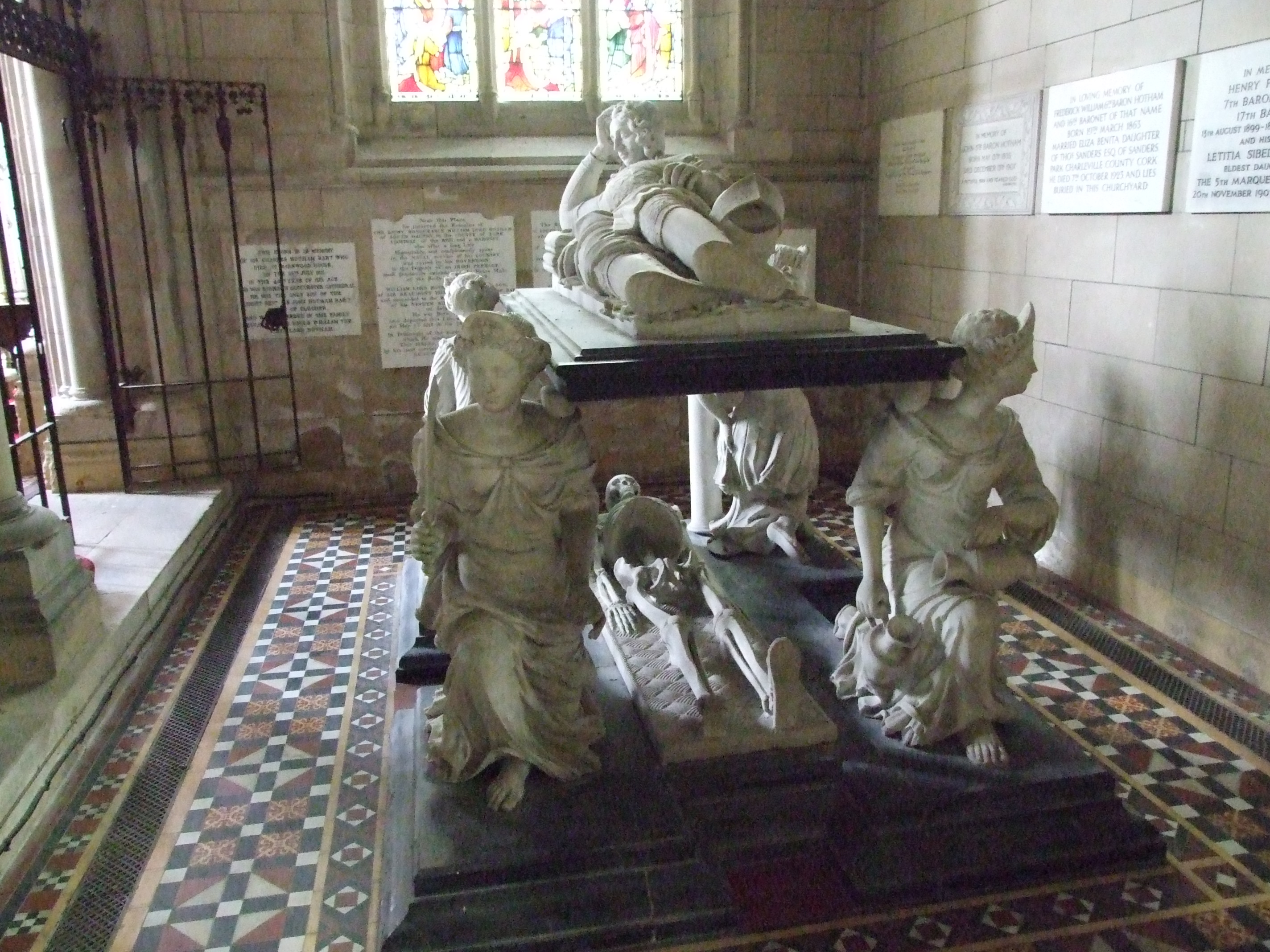In reading Trollope over Christmas I was startled to realize that the Victorians thought of Purity as a virtue rather than a state. It was a trait to be nurtured, rather than preserved. In discussing this, my friend John Nicholson, pastor of Siloam Baptist Churchin Marion, Alabama, suggested that he and I each ask young people we know to name and discuss the Four Cardinal Virtues of antiquity.
The Four Cardinal Virtues originated with Plato’s Republic. Although they were amplified in turn by the Church Fathers, they are not exclusively religious, and should be attainable by all men. These virtues are Prudence, Justice, Temperance and Courage.
 |
|
Tomb of Sir John Hotham, 1st Baronet, of Scorborough (died 3 January 1645), featuring the Four Cardinal Virtues and his wonderfully desiccated skeleton.
|
These are in contrast to the three theological virtues of 1 Corinthians 13—Faith, Hope and Charity—which are unique to the Christian moral worldview. The pairing of these sets of virtues comes down to us as the Seven Virtues, often set against the Seven Deadly Sins.
John’s informal poll was a complete bust on my end. Only one of the college-educated, church-going youngsters I asked had any clue what the Cardinal Virtues are. The exception knew the answer not because of any superior moral education, but because she is an art historian. She recognized the Four Cardinal Virtues from Giotto’s Allegories of the Vices and the Virtues in the Scrovegni Chapel in Padua.
_-_Google_Art_Project_-_edited.jpg/800px-Pieter_Bruegel_the_Elder_-_The_Tower_of_Babel_(Vienna)_-_Google_Art_Project_-_edited.jpg) |
|
Pride, as exemplified by the building of the Tower of Babel, 1563, by Pieter Bruegel the Elder
|
Until the early 20th century the Four Cardinal Virtues were commonly represented as female allegorical figures on public buildings and tombs; prior generations would have had no trouble answering John’s question.
We’re accustomed to artists of the past taking on the great questions of morality, but virtue and vice have been absent from the painter’s vernacular since the 19th century, unless they were to be dealt with ironically, surrealistically, or not at all. So imagine how intrigued I was by Jamie Wyeth’s Seven Deadly Sins at the Farnsworth Museum in Rockland, ME. I thought it brilliant at the time and have not changed my opinion.
 |
|
Anger, 2008, Jamie Wyeth
|
We have gulls here in Rochester, and they’re noisy, nasty creatures, perfectly suited for the depiction of sin. But perhaps more important, the Seven Deadly Sins themselves—wrath, greed, sloth, pride, lust, envy, and gluttony—are all reflections of our animal state.
The question that’s turned in my mind since has been what Wyeth meant by these paintings. There’s no irony in them, but the context of his life and overall work would not lead an outside observer to believe he understands those sins in the same way I do. On the other hand, I don’t see myself having the moral intelligence to paint this subject. An interesting conundrum, indeed.

